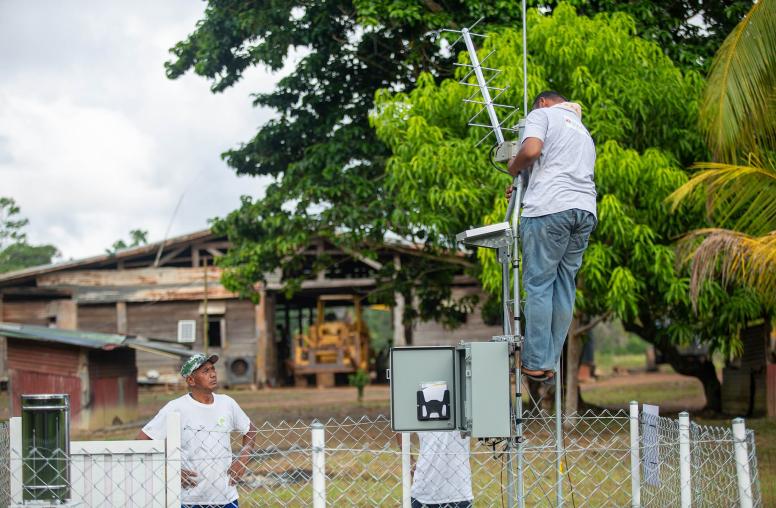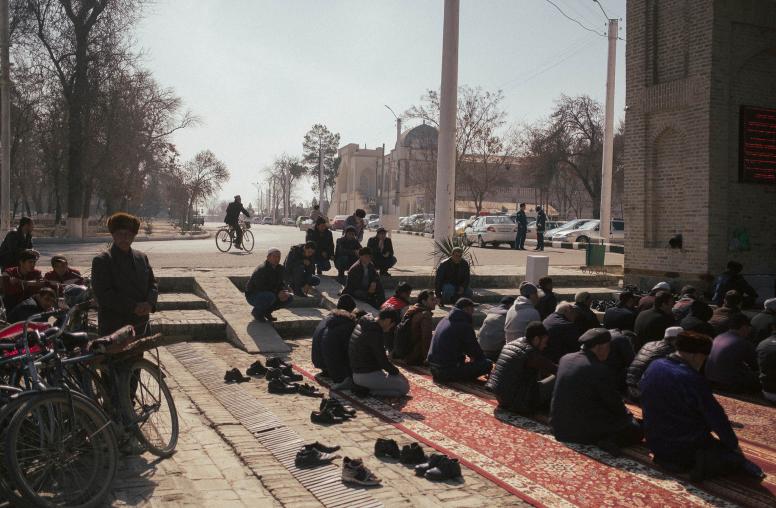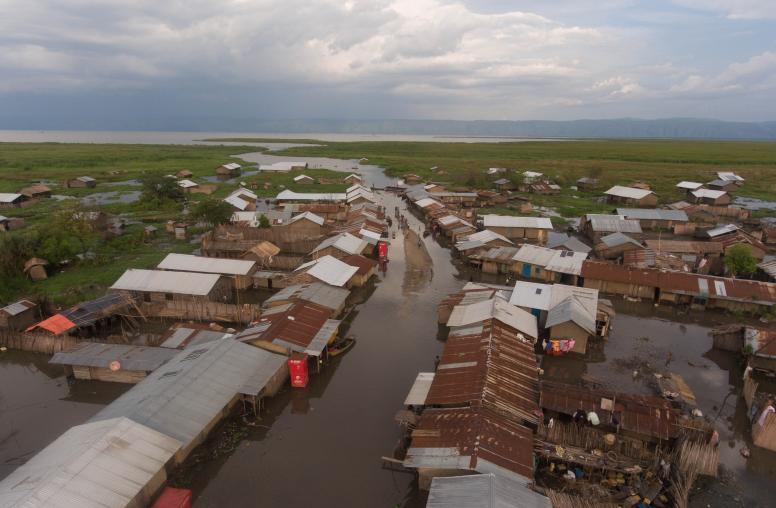The Military’s Role in Countering Violent Extremism
Repurposing Stability Operations
The U.S. military, through its stabilizing mission, has a role to play in countering and eliminating the drivers of violent extremism (VE). Though the military has effective counterterrorism (CT) capability, there is a gap in its counter-VE (CVE) strategies that can be closed by linking reactive CT operations to preventative efforts to remove the drivers of VE. Stability operations construed as part of a CVE strategy should be grounded in an understanding of local context that identifies and addresses the grievances that lead to VE. Such operations require close partnering with civil society organizations and building their capacity, for a strong civil society is the best defense against VE.
Summary
- Despite persistent counterterrorism (CT) operations, globally the threat of violent extremism (VE) is higher today than in August 2001.
- Though it has effective CT capability, the U.S. military lacks a comprehensive strategy for countering and eliminating the drivers of VE.
- Because unstable, fragile states provide gateways for violent extremist organizations to establish a territorial base and recruit, the Department of Defense should adopt a comprehensive counter-VE strategy that complements reactive CT operations with preventative, proactive stability operations.
- Stability operations as part of CVE strategy should be grounded in an understanding of local context that identifies and addresses the grievances that lead to VE. Such operations require close partnering with civil society organizations.
A Gap in the U.S. Military Strategy
Another head of the self-styled Islamic State (IS) in Afghanistan has been eliminated, and U.S.-backed militias tighten their chokehold on Raqqa, while Iraqi forces supported by the United States advance into the final bastion of IS territory in Mosul. Soon the IS will be homeless and leaderless, but the fall of Mosul and Raqqa and even the elimination of Abu Bakr al-Baghdadi are insufficient to stem the tide of violent extremism (VE). The U.S. military has an efficient counterterrorism (CT) capability, which effectively removes violent extremists from the battlefield and dismantles violent extremist organizations. Nonetheless, the U.S. military’s lack of a comprehensive strategy for countering violent extremism (CVE) that links reactive CT operations to preventative efforts to eliminate the drivers of VE stands in the way of an enduring reduction of the VE threat. CT efforts are necessary and vital to U.S. security, but without prevention, they are insufficient, and some tactics, such as the use of drone strikes and night raids, may even amplify VE by contributing to grievances. It is noteworthy that the threat of VE is higher today than it was in August 2001, which is a frustrating situation after sixteen years of persistent, well-funded CT operations.1 But, in the absence of effective prevention, the drivers of VE will continue to stoke a perpetual cycle of radicalization.
The Department of Defense (DOD) has an underutilized role to play through the stability operations mission. Unstable, fragile states, especially those caught up in armed conflict,2 serve as gateways for violent extremists to recruit followers and establish a base from which to carry out terrorist activities.
As the preventative complement to the DOD’s CT efforts, stability operations can help close these gateways, but the future of stability operations is the subject of debate. DOD leaders and policymakers question the validity of stability operations because of the mission’s association with fraught efforts in Vietnam, Iraq, and Afghanistan and because they see the mission as representing the status quo and a way to avoid making necessary changes. This prevalent view, when coupled with a lack of consensus understanding that stability operations can help reduce the VE threat, has left stability operations underresourced. But the capacity for stability operations exists, and simply repurposing this capacity as the preventative complement to CT operations can alleviate these concerns. By adopting a more nuanced approach, the DOD could integrate its existing capacities into a comprehensive CVE strategy and achieve an enduring reduction in VE. Under such a scenario, the degradation of IS forces in Afghanistan and Iraq might not be followed by a resurgence of VE.
Reorienting Stability Operations toward CVE
A broad review of policy, doctrine, and research in the areas of CVE, state fragility, capacity building, and stability operations reveals three critical principles that can help military leadership reorient stability operations toward reducing VE. These principles serve to operationalize the design and execution of CVE operations.
Principle 1: Understand the Local Context, Then Act
Because the grievances that drive VE are unique to the local context, understanding the context, down to the community level, must be the first concern of stability operations planners and the first step toward eventually developing national-level plans.
A rubric drawn from the principles of sustainable capacity building developed by the United States Institute of Peace (USIP) serves to frame actions in a local context: 3
- Does the action promote local ownership of solutions?
- Does the action do no harm to local actors or their perception of the stability operations effort?
- Does the action result in locally sustainable solutions?
This local focus does not require that local tradition or local norms be considered the or most effective way of doing business, for the local way of doing business may be directly contributing to the VE problem. Rather, the point is to understand the local context, from the local viewpoint, so that solutions can be applied that are effective and sustainable within that context.
Principle 2: Address Grievances
When a population cannot address grievances nonviolently, it turns to violent means.4 VE-focused stability operations build legitimate remedies to grievances that drive VE. Understanding the local context exposes these grievances, presenting solutions that stability operations can facilitate. Efforts to rectify the most VE-significant grievances then become priorities, focusing effort on enabling capacity building that will most effectively reduce a population’s vulnerability to VE.
Principle 3: Engage in Next-Level Partnering
Enabling civilian organizations is vital to the success of VE-focused stability operations because these organizations possess essential CVE expertise and tools, including deep understanding of the local context, mediation and negotiation expertise, and peacebuilding experience. Civilian organizations and the military must become functional partners in this CVE effort, leveraging each other’s distinctive capabilities from the start of the operational design process and together creating space for civilian experts to do their work, enabled by the military. Both parties must work to reduce or eliminate barriers to partnering because a strong civil society is an excellent defense against VE.
This partnership is already under way: in 2005, InterAction, the DOD, and USIP codified military and nongovernmental organization hostile environment deconfliction methods, which greatly improved the ability of the military and humanitarian organizations to work in adjacent spaces.5 The next step is to move beyond deconfliction and toward cooperative partnership, integrating efforts where possible, because settling for deconfliction alone denies the possibility of synergy. Partners must design and plan activities together from inception, eliminating informational and operational barriers. Challenges with the military information classification system are one example of a barrier that must be overcome; another is the reluctance of some civil society organizations to work with any military group.
Next-level partnering, the tight integration and close cooperation between civilian and military partners working toward the same objective, will look different depending on the local context. Sometimes civilian organizations will fully integrate with military partners; at other times partners will deliberately deconflict civilian activities from military efforts to prevent misperception of intentions and ensure safe lanes of operation. The partnership itself is the key to maximum effectiveness.
Redesigning Traditional Approaches to Stability Operations
Getting the shooting to stop does not eliminate the grievances that drive individuals to VE. Perhaps most important from a military perspective, the way in which military forces achieve security can also create grievances that fuel VE. An aggrieved population will remember and resent abusive practices long after the violent conflict ends, but security forces can prevent a hardening of civilian disposition by discovering, acknowledging, and punishing members of security forces for negative practices such as torture, sexual violence, kidnapping, and executions. By redesigning traditional approaches to stability operations along the following lines, guided by the three critical principles discussed above, stability operations can effect change and realize a reduction in VE.
- All security sector reform should partner military trainers with interorganizational human rights trainers because focusing simply on security tactics and techniques without human rights training results in units effective at stamping out violence but likely to incite grievances arising from abusive behaviors. Security sector reform should result in skilled security forces able to relate to the protected population, incentives for adhering to universal human rights, and legitimate punishment for abusive behavior by security forces.
- Security forces must secure vulnerable populations in such a manner that there is no perception of special consideration or favoritism toward any group. Doing so requires developing a deep understanding of the local population dynamics, something civilian partners can assist with. Armed with contextual understanding, security forces can focus on protecting the population impartially, while demonstrating they are advocates for peace.
- The separation of warring parties should involve security operations and locally led mediation efforts conducted in parallel. Partnership between security forces and mediators can help mitigate and reduce revenge killings and prevent perpetuation of a cycle of violence that fuels VE. Mediation efforts should begin before the first security forces deploy, bringing factional leadership together and building relationships to begin laying the foundation for a lasting peace after large-scale violence has ended.6
- Humane detention and incarceration practices prevent grievances that drive VE because it is very difficult to recruit people into VE when conditions in prison are better than those outside. Upon detention, experts should immediately triage detainees according to potential threat, and then introduce them into appropriate adjudication channels. High-threat individuals should, after conviction, be isolated to prevent collateral radicalization while they are incarcerated. Those posing a moderate or low threat should be deradicalized, rehabilitated, and reintegrated into society, with support services to alleviate challenging circumstances. Nonjudicial adjudication may be offered. Prisons and detention facilities are often fertile breeding grounds for VE, so a tempered and precise approach to detention and incarceration is key to preventing its spread.7
- Mass reintegration of ex-combatants entails navigating a complex tangle of civilian and military domains; demobilization, disarmament, and reintegration operations must be integrated with other plans, such as detention, deradicalization, and reconciliation. Many ex-combatants will have career skills that are beneficial to communities, such as knowledge of electricity and engineering; however, they must cease to be a threat, and communities have to accept them back. Also, reconciliation must not run counter to legal barriers such as foreign terrorist organization designations.8 A successful mass reintegration in particular requires the strong partnership of civilian and security bodies.
- Access and nondiscrimination allow a population to voice grievances. The military must create secure spaces where civilian organizations can build the local capacity to participate in governmental processes and fight discrimination.
Recommendations
CT operations without CVE efforts are an incomplete approach to the VE threat, but a comprehensive CVE strategy is possible with the addition of repurposed stability operations, which requires more integrated partnership with civilian organizations with CVE expertise. The following recommendations maximize the military contribution to CVE and empower civilian partners through a redesign of stability operations:
- Repurpose stability operations as the DOD’s role in CVE. Stability operations should become the proactive, preventative CVE complement to the DOD’s reactive CT mission.
- Adopt the principles of VE-focused stability operations. These three critical principles reorient stability operations on VE by providing a rubric for the design, planning, and execution of such operations.
- Redesign the conduct and implementation of stability operations. The redesigned applications of stability operations suggested here are examples of CVE reduction efforts possible through next-level partnering.
Notes
- National Consortium for the Study of Terrorism and Responses to Terrorism, Global Terrorism Database, 2016, www.start.umd.edu/gtd/features/GTD-Data-Rivers.aspx.
- According to the Institute for Economics and Peace, “Eighty-eight percent of all terrorist attacks in 2015 occurred in countries that were experiencing or involved in armed conflicts.”
- “Global Terrorism Index 2015,” November 2015, http://economicsandpeace.org/wp-content/uploads/2015/11/Global-Terrorism-Index-2015.pdf.
- Nadia Gerspacher, Sustainable Capacity Building: Guidelines for Planning and Project Design Communities (Washington, DC: U.S. Institute of Peace, March 2017), 8.
- “A U.S. Humanitarian, Development and Peacebuilding Statement on the U.S. Global Countering Violent Extremism Agenda,” Action for Community Development and other signatories, July 20, 2015, www.mercycorps.org/sites/default/files/20July2015_Statement_U.S.GlobalCounteringViol entExtremismAgenda.pdf.
- USIP, Interaction, and DOD, Guidelines for Relations between U.S. Armed Forces and Non-Governmental Humanitarian Organizations in Hostile or Potentially Hostile Environments (Washington, DC: U.S. Institute of Peace, 2005).
- David R. Smock and Daniel Serwer, eds., Facilitating Dialogue: USIP’s Work in Conflict Zones (Washington, DC: U.S. Institute of Peace, 2012).
- Peter R. Neumann, Prisons and Terrorism: Radicalisation and De-radicalisation in 15 Countries (London: International Centre for the Study of Radicalisation and Political Violence [ICSR], 2010), 1.
- Georgia Holmer and Adrian Shtuni, “Returning Foreign Fighters and the Reintegration Imperative,” Special Report no. 402 (Washington, DC: U.S. Institute of Peace, 2017), 1.
About this Brief
This Peace Brief, which draws on the author’s experiences during a yearlong fellowship at the United States Institute of Peace (USIP), addresses a gap in the U.S. military strategy for countering violent extremism and offers recommendations for a new approach.
Edward Powers is an active duty lieutenant colonel in the U.S. Marine Corps currently assigned to USIP as a Commandant of the Marine Corps Fellow. He has deployed to Iraq and Afghanistan in support of combat operations, as well as to Okinawa, Japan. Most recently he deployed to the Federal Democratic Republic of Nepal in support of Operation Sahayogi Haat, which provided humanitarian assistance and disaster relief following the devastating earthquake there in 2015.



